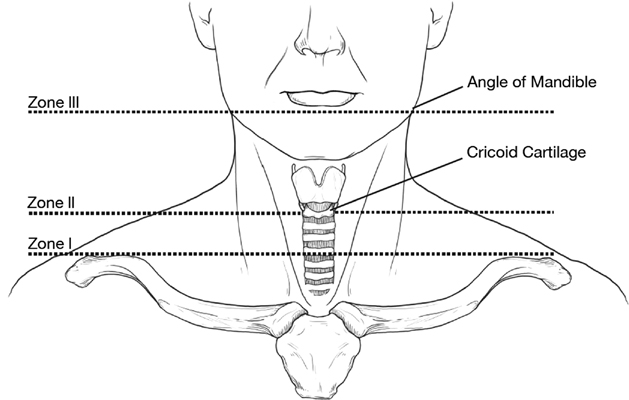Injuries to the carotid arteries are relatively uncommon, but not rare. Despite some variability in reported data from center to center, certain principles have evolved. Injuries to the carotid artery are traditionally considered blunt or penetrating (Box 1). Management algorithms for penetrating neck trauma have been well established for more than 4 decades. Treatment of penetrating vascular injuries in the neck takes into consideration the type of injury, the location (zone I, II or III) (Figure 1), and potential associated injuries to the aerodigestive tracks as well as the neurologic and overall status of the patient. Zone II injuries are usually handled through conventional surgical exposures. Zone I penetrating injuries require careful consideration of intrathoracic bleeding and/or the need for intrathoracic vascular control. Zone III injuries involving the distal internal carotid artery at the base of the skull require exposures commonly used in conventional carotid artery surgery. The exact approach to a given injury, especially zone I and zone III, can be precisely tailored depending upon the results of the imaging studies. In the presence of a hard sign of vascular injury (Box 2), either direct exploration or conventional angiography, if endovascular repair is being contemplated, is appropriate. Zone I and zone III injuries require serious consideration of a dedicated imaging study even when hard signs of vascular injury are lacking.
Penetrating and Blunt Injuries of the Carotid Artery
Penetrating Carotid Artery Injuries

![]()
Stay updated, free articles. Join our Telegram channel

Full access? Get Clinical Tree


Thoracic Key
Fastest Thoracic Insight Engine
